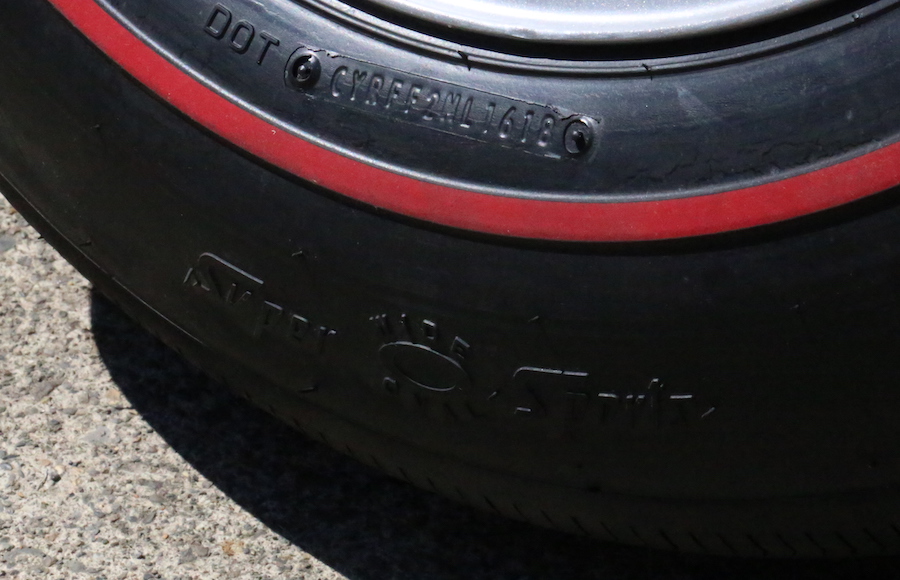
Most of us know that gas has an expiration date. We typically say that oil should be changed at least twice a year. But when’s the last time you considered the age of your tires? If you’re lucky, you might put a couple thousand miles per year on your classic. Unless you’re doing burnouts the whole time, it’s unlikely you’ll end up putting much wear on those tires, and that brings us to a situation that you maybe haven’t thought of: Tires aging out of a useful life. It’s pretty tempting to look at a set of tires, note good tread life remaining, and keep running them. The trouble with that is that over time, the tire can deteriorate internally. Rubber oxidizes and dries out, and UV light speeds up the process considerably. Eventually, tires will start to crack at the sidewall and between the tread. When they get to that point, they absolutely should be replaced. But they could become dangerous before they get there, too. Back in 2015, I had a set of tires on my 1972 K10 pickup that didn’t ever seem to wear. When I took it to my local tire store to have a new set priced, I asked one of the techs to come out and look at the date code on one of them, just to see how old they were. According to the sidewall, they were made in 1993, but they weren’t cracked or weathered at all externally. Still, in a panic situation, would they have reacted the way they were initially designed to react? The lack of wear was probably due to their hardness from age. Not good. How do you check your tires? Simple. There is a number cast into the side of each tire, starting with DOT. After that, there should be 10-12 characters. The date your tire was made is coded in the last four digits: the first two are the week, the second the year. This applies to tires made after 2000. So a tire with the code 0413 would be made in the last week of January, 2013. The tire above was made in the 16th week of 2018. After a thorough inspection, a mechanic may recommend tire repair. Generally speaking, six or seven years is industry standard recommendation for tire replacement. Any older than 10 is asking for trouble. There is another code for tires made prior to 2000, but I won’t get into that here, because they’d be 19 years old by now. Replace them already! Your safety in your classic car is up to you, and your tires are the only thing keeping you — and that car you love — on the road. Make sure they’re still viable, pliable, and up to that job.